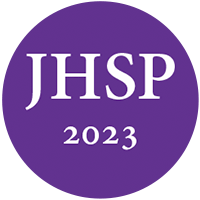The professional home for health service psychologists.
Join a community of 15,000 psychologists and trainees.
Learn it today. Apply it tomorrow.
Connecting you to what you need in your career.
Making a difference.
Ellison, R. L., & Stika, M. (2018). Feedback on invalid neuropsychological testing: Mild traumatic brain injury (mTBI). Journal of Health Service Psychology, 44, 19–23.
Performance validity tests (PVTs) and symptom validity tests (SVTs) are important in neuropsychological testing to capture the patient’s engagement with the testing process and any attempts to influence it. However, it can be clinically difficult to provide patients with meaningful feedback on the testing when one or more measures of validity were failed. This is a frequent challenge in cases of mild traumatic brain injury. Several methods of presenting useful information to the patient and family are described.
Note. Performance and symptom validity in neuropsychology (selected texts) notated with asterisk.
Belanger, H. G., Vanderploeg, R. D., Curtiss, G., & Warden, D. L. (2007). Recent neuroimaging techniques in mild traumatic brain injury. The Journal of Neuropsychiatry and Clinical Neurosciences, 19(1), 5-20.
*Bianchini, K. J., Mathias, C. W., & Greve, K. W. (2001). Symptom validity testing: A critical review. The Clinical Neuropsychologist, 15(1), 19-45.
*Bigler, E. D. (2012). Symptom validity testing, effort, and neuropsychological assessment. Journal of the International Neuropsychological Society, 18(4), 632-640.
Boone, K. B. (2009). The need for continuous and comprehensive sampling of effort/response bias during neuropsychological examinations. The Clinical Neuropsychologist, 23, 729-741.
*Bush, S. S., Ruff, R. M., Tröster, A. I., Barth, J. T., Koffler, S. P., Pliskin, N. H., …& Silver, C. H. (2005). Symptom validity assessment: Practice issues and medical necessity NAN Policy and Planning Committee. Archives of Clinical Neuropsychology, 20, 419-426.
Centers for Disease Control and Prevention. (2003). Report to Congress on mild traumatic brain injury in the United States: Steps to prevent a serious public health problem. Atlanta, GA: Centers for Disease Control and Prevention, 45.
Delis, D. C. (2000). CVLT-II: California verbal learning test: Adult version. Psychological Corporation.
Flaherty, J. M., Spencer, R. J., Drag, L. L., Pangilinan, P. H., & Bieliauskas, L. A. (2015). Limited usefulness of the Rey Fifteen-Item Test in detection of invalid performance in veterans suspected of mild traumatic brain injury. Brain injury, 29(13-14), 1630-1634.
*Fox, D. D. (2011). Symptom validity test failure indicates invalidity of neuropsychological tests. The Clinical Neuropsychologist, 25(3), 488-495.
Green, P. (2005). Green’s Word Memory Test for Microsoft Windows: User’s manual. Green’s Publications Incorporated.
Green, P., Allen, L. M., & Astner, K. (1996). The Word Memory Test: A user’s guide to the oral and computer-administered forms, US version 1.1. Durham, NC: CogniSyst.
Greiffenstein, M. F., Baker, W. J., & Gola, T. (1994). Validation of malingered amnesia measures with a large clinical sample. Psychological Assessment, 6(3), 218.
Guskiewicz, K. M., McCrea, M., Marshall, S. W., Cantu, R. C., Randolph, C., Barr, W., … & Kelly, J. P. (2003). Cumulative effects associated with recurrent concussion in collegiate football players: the NCAA Concussion Study. JAMA, 290(19), 2549-2555.
*Heilbronner, R. L., Sweet, J. J., Morgan, J. E., Larrabee, G. J., Millis, S. R., & Conference
Participants (2009). American Academy of Clinical Neuropsychology consensus
conference statement on the neuropsychological assessment of effort, response bias, and malingering. The Clinical Neuropsychologist, 23, 1093-1129.
Hofman, P. A., Stapert, S. Z., van Kroonenburgh, M. J., Jolles, J., de Kruijk, J., & Wilmink, J. T. (2001). MR imaging, single-photon emission CT, and neurocognitive performance after mild traumatic brain injury. American Journal of Neuroradiology, 22(3), 441-449.
Hoge, C. W., McGurk, D., Thomas, J. L., Cox, A. L., Engel, C. C., & Castro, C. A. (2008). Mild traumatic brain injury in US soldiers returning from Iraq. New England Journal of Medicine, 358(5), 453-463.
Hughes, D. G., Jackson, A., Mason, D. L., Berry, E., Hollis, S., & Yates, D. W. (2004). Abnormalities on magnetic resonance imaging seen acutely following mild traumatic brain injury: correlation with neuropsychological tests and delayed recovery. Neuroradiology, 46(7), 550-558.
Inman, T. H., & Berry, D. T. (2002). Cross-validation of indicators of malingering: A comparison of nine neuropsychological tests, four tests of malingering, and behavioral observations. Archives of Clinical Neuropsychology, 17(1), 1-23.
Iverson, G. L. (2010). Mild traumatic brain injury meta-analyses can obscure individual differences. Brain Injury, 24(10), 1246-1255.
*Martin, P. K., Schroeder, R. W., & Odland, A. P. (2015). Neuropsychologists’ validity testing beliefs and practices: A survey of North American professionals. The Clinical Neuropsychologist, 29(6), 741-776.
McKee, A. C., Cantu, R. C., Nowinski, C. J., Hedley-Whyte, E. T., Gavett, B. E., Budson, A. E., … & Stern, R. A. (2009). Chronic traumatic encephalopathy in athletes: progressive tauopathy after repetitive head injury. Journal of Neuropathology & Experimental Neurology, 68(7), 709-735.
Merten, T., Bossink, L., & Schmand, B. (2007). On the limits of effort testing: Symptom validity tests and severity of neurocognitive symptoms in nonlitigant patients. Journal of Clinical and Experimental Neuropsychology, 29(3), 308-318.
Rey, A. (1941). L’examen psychologique dans les cas d’encéphalopathie traumatique. (Les problems). Archives de psychologie.
Schretlen, D. J., & Shapiro, A. M. (2003). A quantitative review of the effects of traumatic brain injury on cognitive functioning. International Review of Psychiatry, 15(4), 341-349.
Slick, D., Hopp, G., Strauss, E., & Thompson, G. (1997). The Victoria symptom validity test. Odessa, FL: Psychological Assessment Resources.
*Slick, D. J., Sherman, E. M. S., & Iverson, G. L. (1999). Diagnostic criteria for malingered neurocognitive dysfunction: Proposed standards for clinical practice and research. The Clinical Neuropsychologist, 13(4), 545-561.
Suhr, J. A., & Gunstad, J. (2005). Further exploration of the effect of “diagnosis threat” on cognitive performance in individuals with mild head injury. Journal of the International Neuropsychological Society, 11(1), 23-29.
Taylor, C. A., Bell, J. M., Brieding, M. J., & Xu, L. (2017). Traumatic brain injury–related emergency department visits, hospitalizations, and deaths—United States, 2007 and 2013. MMWR. Surveillance Summaries, 66.
Tombaugh, T. N. (1996). Test of memory malingering: TOMM. North Tonawanda, NY: Multi-Health Systems.
Vanderploeg, R. D., Curtiss, G., Luis, C. A., & Salazar, A. M. (2007). Long-term morbidities following self-reported mild traumatic brain injury. Journal of Clinical and Experimental Neuropsychology, 29(6), 585-598.
van Hout, M. S., Schmand, B., Wekking, E. M., Hageman, G., & Deelman, B. G. (2003). Suboptimal performance on neuropsychological tests in patients with suspected chronic toxic encephalopathy. Neurotoxicology, 24(4), 547-551.
*Victor, T. L., Boone, K. B., Serpa, J. G., Buehler, J., & Ziegler, E. A. (2009). Interpreting the meaning of multiple symptom validity test failure. The Clinical Neuropsychologist, 23(2), 297-313.
Viola-Saltzman, M, & Watson, N.F. (2012). Traumatic brain injury and sleep disorders. Neurologic Clinics, 30(4), 1299-1312.
Wechsler, D. (2008). Wechsler adult intelligence scale–Fourth Edition (WAIS–IV). San Antonio, TX: NCS Pearson, 22, 498.
Wetjen, N. M., Pichelmann, M. A., & Atkinson, J. L. (2010). Second impact syndrome: concussion and second injury brain complications. Journal of the American College of Surgeons, 211(4), 553-557.
Copyright © 2025 All rights reserved. National Register of Health Service Psychologists










